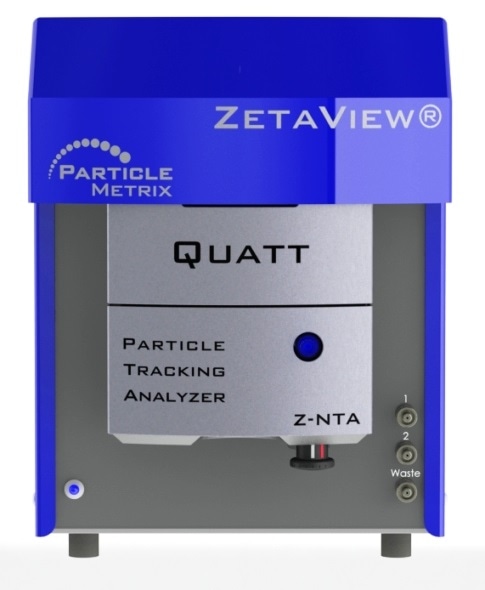Analytik has launched the next generation ZetaView® QUATT, with a multi-wavelength video tracking microscope for rapid analysis of size, concentration, fluorescence, electrophoretic mobility and sub-populations of individual nanoparticles.

Biological nanoparticles including extracellular vesicles, exosomes, viruses, or virus-like particles are a rapidly growing area of research in the life sciences and nanomedical field. Using proprietary Nanoparticle Tracking Analysis (NTA) technology, ZetaView instruments are able to capture the Brownian motion of each particle in a video.
Based on the different diffusion movements of large and small particles in the surrounding liquid, ZetaView instruments are able to determine the hydrodynamic diameter of the particles. Furthermore, following the movement of the particles in an applied electric field, the charge state of the particle surface (zeta potential) can be measured. As a consequence, pattern parameters, such as intensity fluctuations, surface geometry and shape of the particles as well as particle concentration are recorded and can be used to distinguish sub-populations.
The new ZetaView QUATT has been designed to enhance sample measurement specificity. Through the addition of three additional laser sources, the new instrument expands on the ZetaView's existing fluorescence capability, adding multi-wavelength excitation to its market-leading anti-bleach fluorescence technology.
As the names suggest, the ZetaView TWIN houses two excitation lasers and the ZetaView QUATT takes this to the next level, housing four different wavelength lasers. Both instruments have automatic filter sliders which are activated by a simple mouse click in the software to switch between lasers and between fluorescence and scattering modes.
With the new exciting ZetaView NTA instrument one, two, or four different fluorophores or dyes with different excitation and emission spectra can be analysed on the same sample, allowing calculation of biomarker ratios. The innovation of multi-wavelength fluorescence-NTA also reduces total measurement times, minimises the amount of sample required and improves experimental reproducibility.